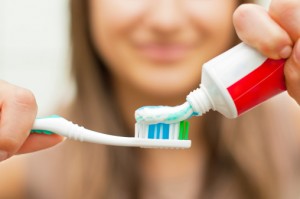Understanding how whitening toothpastes work will help you choose the right one for you.

How Teeth Get Stained
Teeth may become stained in two ways. First of all, substances you eat may stick to the surface of your tooth enamel. Some types of substances like tea, red wine, coffee, cigarette smoke, and dark sodas can cling very stubbornly and eventually form a visible surface stain. If this colored surface residue is not cleaned promptly and thoroughly, over time it can actually work its way down beneath the surface of the tooth enamel. This is the second type of tooth stain and it is much more difficult to remove than a surface stain.
How Whitening Toothpastes Work
Most whitening toothpastes work by polishing away surface stains using an abrasive agent. Some may also contain a bleaching agent, but again the product is mainly working on surface stains. Finally, some toothpastes don’t actually remove stains at all but instead cover them with an optical whitening agent that just makes your teeth appear whiter.
What to Look for in a Whitening Toothpaste
The most important thing to look for in a whitening toothpaste is a seal of approval from the American Dental Association. This endorsement tells you that the product has been scientifically proven to remove surface stains.
You will also want to read the ingredients list carefully, as this will help you understand how the toothpaste works:
- Carbamide peroxide or hydrogen peroxide: These ingredients are used to set off an oxidation reaction on the tooth enamel, which helps break up surface stains.
- Hydrated silica, calcium carbonate, or baking soda: These are abrasive ingredients that help remove plaque and surface stains from teeth.
- Calprox: This is a patented formula that helps break down the thin layer of protein that forms on teeth and holds stains.
- Polyvinylpyrrolidone (PVP): This chemical helps prevent new stains from sticking to tooth enamel.
- Blue coravine: This is an optical whitener, or a chemical that adheres to tooth enamel and makes it appear more white.
When You Need More Whitening Power
In order to improve stains that may be inside of rather than on top of the tooth enamel, you will need professional teeth whitening from a qualified cosmetic dentist. Your dentist is able to offer stronger bleaching agents than you would get in an over the counter product and administer them comfortably and safely in a supervised procedure.

